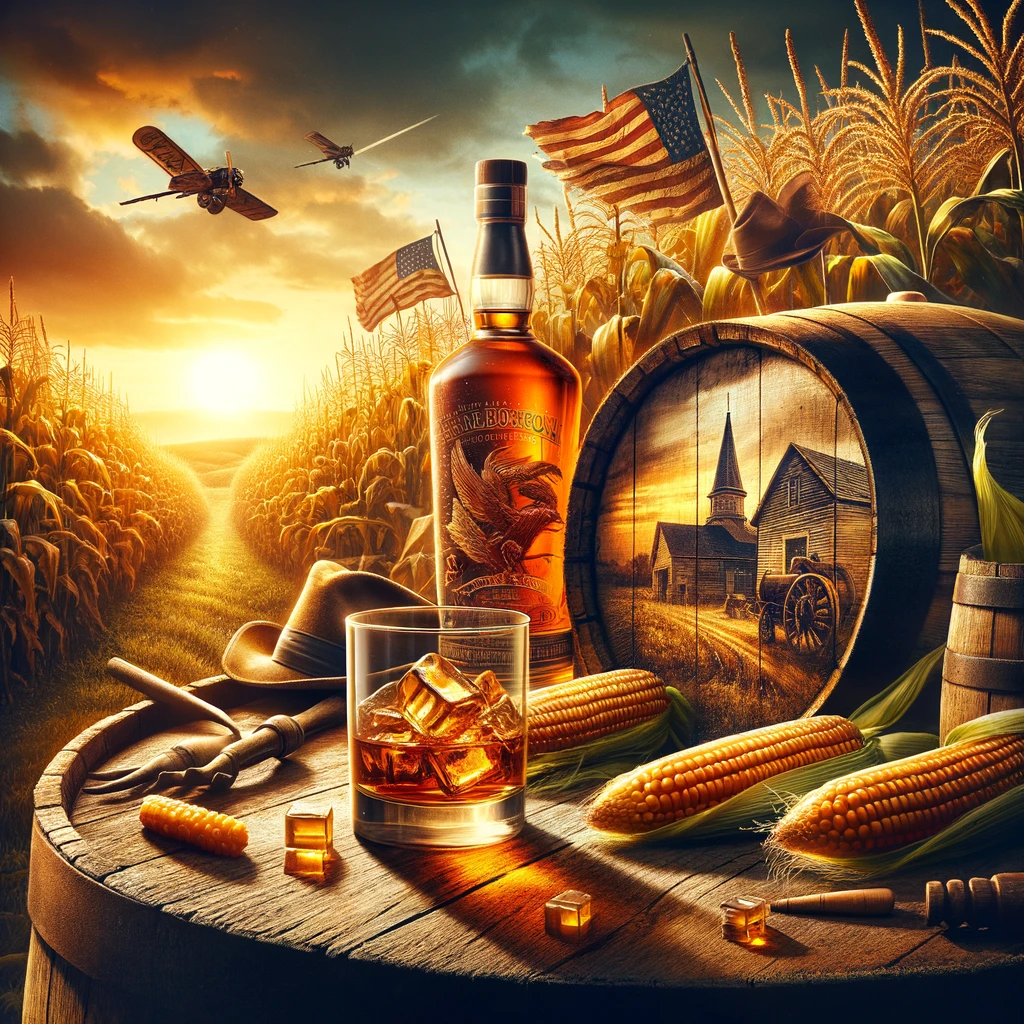
Introduction
Bourbon, a distinctly American spirit, has its roots deeply embedded in the history and culture of the United States. Its name evokes images of amber liquid in charred oak barrels, aging gracefully in the warm, humid climates of Kentucky. But what makes bourbon uniquely “bourbon”? And how has its definition evolved?
I find the topic of how it became “Bourbon” very fascinating. The article below is a whirlwind summary, and for those seeking a more in-depth review, I highly recommend Bourbon: The Rise, Fall, and Rebirth of an American Whiskey” by Fred Minnick. This book is well written, beautiful in the physical format, and a fantastic listen as an audiobook.
Defining Bourbon: The Basics
The modern definition of bourbon is established in U.S. law, specifically in the Code of Federal Regulations. To be labeled as bourbon, a spirit must meet several criteria:
- It must be produced in the United States.
- The grain mash must be at least 51% corn.
- It must be distilled to no more than 160 proof (80% alcohol by volume).
- It must enter the barrel for aging at no more than 125 proof (62.5% alcohol by volume).
- It must be aged in new, charred oak barrels.
- It must be bottled at a minimum of 80 proof (40% alcohol by volume).
- No additives (coloring, flavoring, or other spirits) are permitted.
Historical Roots and Development
Early Distillation and the Birth of Bourbon
Distillation techniques were brought to the American colonies by European settlers. The practice of distilling corn mash into whiskey became prevalent in the late 18th century, particularly in Virginia, Maryland, Pennsylvania, and what would later become Kentucky. The term “bourbon” is believed to have originated from Bourbon County, Kentucky, which was a major shipping port for distilled spirits in the late 1700s and early 1800s. Barrels shipped from its ports were stamped with the county’s name, and the whiskey gained popularity as “Bourbon.
The Whiskey Rebellion of 1794 was a pivotal moment for American distillers. The federal government imposed a whiskey tax to pay off war debts, leading to widespread protests. This event highlighted the importance of whiskey to the American frontier and set the stage for further development and regulation of the industry.
The Bottled-in-Bond Act of 1897
One of the first federal standards to define and regulate whiskey was the Bottled-in-Bond Act of 1897. This act was a response to the widespread adulteration of whiskey, ensuring that bonded whiskey met certain quality and authenticity standards. While not specific to bourbon, it laid the groundwork for future legislation concerning bourbon’s definition.
The Federal Standards of Identity for Distilled Spirits of 1964
The most significant legislative action to define bourbon came in 1964, when the United States Congress recognized bourbon as a “distinctive product of the United States.” The Federal Standards of Identity for Distilled Spirits established strict regulations governing the production and labeling of bourbon, solidifying its identity and distinguishing it from other types of whiskey.
Evolution of the Bourbon Industry
Following the repeal of Prohibition in 1933, the bourbon industry slowly began to revive. Distillers experimented with aging processes, mash bills, and barrel charring techniques, leading to the wide variety of bourbon styles available today.
The late 20th and early 21st centuries saw a resurgence in bourbon popularity, driven in part by the rise of craft distilleries. These smaller, often artisanal producers have pushed the boundaries of traditional bourbon production, experimenting with local grains, varied aging conditions, and innovative distillation methods, all while adhering to the legal definition of bourbon.
Today, bourbon is not just an American favorite but a globally recognized spirit. Its unique character, tied to specific production methods and American heritage, has made it a symbol of American craftsmanship and tradition around the world.
The history of bourbon is a story of innovation, regulation, and tradition. Its definition, carefully crafted and legally codified, ensures that bourbon remains a distinct product of the United States. From the early days of frontier distillation to the global appreciation of today, bourbon has evolved while maintaining its core identity. As bourbon continues to gain popularity, it will undoubtedly adapt to new trends and tastes, but its heart — a spirit deeply rooted in American history — will remain unchanged.
